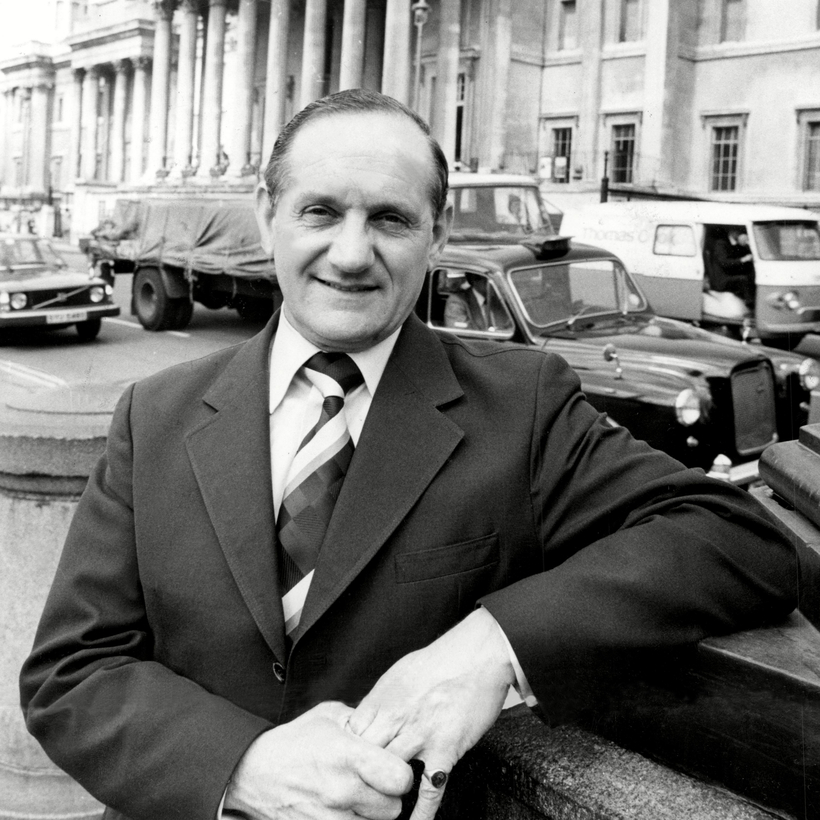In the 1960s, the Krays had London by the throat. Twins who grew up in the East End of the city, Ronnie and Reggie Kray quickly rose through the gangland ranks of postwar England to become the central figures in a swirl of violence that took in arson, hijacking, protection rackets, armed robbery, and murder. Their notoriety ballooned after they opened a nightclub, Esmerelda’s Barn, which allowed them to mix with the upper classes of British society. The Sunday Mirror printed vague insinuations about rumors of a sexual relationship between Ronnie Kray and Conservative politician Robert Boothby, who went on to successfully sue the paper for nearly $112,000 in damages.
After this, the media would no longer report on them. The government, perhaps unwilling to risk renewed interest in the Boothby connection, seemed to look the other way. The Krays claimed to have numerous corrupt informants within the police department and in higher levels of government. Their underworld empire was surrounded by a wall of silence. They had become untouchable.
It all came crashing down in 1968, thanks to one man. Detective Leonard “Nipper” Read, who died last week at age 95, will forever be known as the man who took down the Krays. But even then, it took a couple of attempts.
In 1964, fresh from the success of his part in solving the Great Train Robbery, where a gang of thieves stole the equivalent of $61 million from a Royal Mail train, Read arrested the Krays for the first time, on protection-racketeering charges. However, he was thwarted by the underworld network that the Krays had erected around themselves. In an interview for the 1990s British TV series Gangsters, Read recalled telling a victim of the Krays about their arrest. “She fell down on her knees and grasped my legs in her arms and said, ‘Thank God. Thank God, you’ve saved my life,’” he said, only to see her reappear in court the following day. “Now resplendent in furs and high-heeled shoes … saying, ‘Mr. Read, I’d like to stand bail for my good friends the Kray twins.”

But the Krays hadn’t figured on the tenacity of Read. He had originally wanted to become a police officer in his home county of Nottinghamshire, but was five inches too short to qualify (hence his “Nipper” nickname). London’s Metropolitan Police was less fussy about height restrictions. Nevertheless, Read promised he was still growing in order to make the grade. Legend has it that he was fast-tracked into the plainclothes detective branch after his superintendent saw Read’s diminutive frame shuffling along Camden High Street and said, “He’ll have to come off the bloody streets. He’ll get the force a bad name.”
The Krays claimed to have numerous corrupt informants within the police department and in higher levels of government. They had become untouchable.
In many ways, Read could be seen as a bizarro version of the Krays, a figure who used his powers for good rather than evil. The Krays parried their love of boxing into illegal bookmaking; Read eventually became president of the British Boxing Board of Control. The Krays skipped out on national military service within days, after one punched a corporal; Read joined the Royal Navy and left a petty officer. Read and the Krays were equally good at applying pressure to those who stood against them, to admittedly different ends. No wonder that, when Ronnie Kray bought a python to keep as a pet, he decided to name it Mr. Read.
Unbowed by his past failure, Read gathered together a team of 20 specialists for a renewed year-long investigation, finally compiling enough evidence to arrest the twins again in 1968. Eager not to repeat the same mistakes as before, he tasked a further 200 officers to protect the witnesses from the Krays and their associates. This time, at last, success. In March 1969, Ronnie and Reggie Kray were sentenced to life in prison for the murders of George Cornell and Jack “the Hat” McVitie.
Ronnie and Reggie died in 1995 and 2000, respectively, but not before they were discovered to be running a business from behind bars that included bodyguard protection, servicing the likes of Frank Sinatra. Meanwhile, Read’s tenacity continued unabated. When the bodies of two missing children were found in 1970, the cause of death could not be determined due to decomposition. But Read was driven to uncover the truth, interviewing 15,000 people in his investigation. The case was reportedly Read’s only one to go unsolved until, 30 years later, with the conviction of a man named Ronald Jebson, Read closed it. As the Krays could have attested, you went up against Detective Leonard “Nipper” Read at your peril.
Stuart Heritage is a Writer at Large for AIR MAIL based in Kent, U.K.


